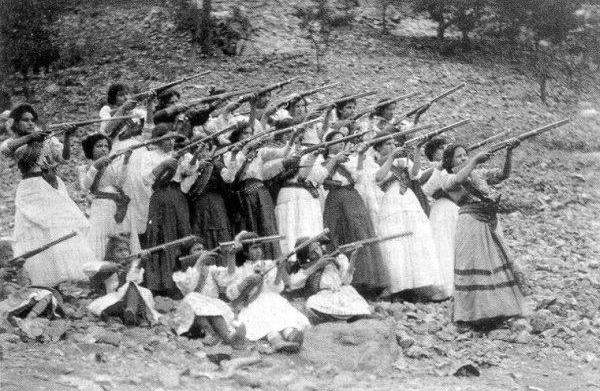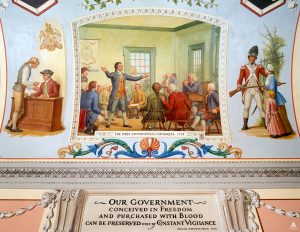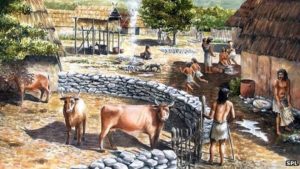Winner of the Spring 2018 StMU History Media Award for
Best Article in the Category of “Gender Studies”
“La Adelita” was one of the most popular corridos, or songs of romance, during the Mexican Revolution (1910-1920).1 This song is the love story of a young woman who travels with a sergeant and his regiment during the revolution.2 The song praises Adelita, the sweetheart of the troop, for both her beauty and her valor, noting how she is wanted by the other soldiers. We can imagine this woman as an object of desire, whose beauty and physique attracted the soldiers, and eventually broke their hearts. But this description is actually… incorrect.3
The Adelita, also known as soldadera, or female soldier, is the term used to describe women who contributed to many aspects of the Mexican Revolution. These women worked as nurses, food providers, lovers, spies, messengers, and fighters.4 In fact, some reached the rank of colonel and general. Many of them were forced by their husbands to follow them and work in the camps, but there were also those who volunteered to join the cause.5 Today, soldaderas are remembered as strong and courageous women who took up weapons and became fighters, often having to cut their hair and dress to appear like their male counterparts, because of the oppressive gender inequality prevalent in the Mexican society of that time.6 There is one soldadera in particular, Petra Herrera, also known as La Guerrera, and as La Generala (female general), who joined the cause and fought with the strongest of the soldiers. But what inspired women to join their male counterparts to fight this war, and why did the revolution even happen?

To answer this question and to be able to understand why these women now make up a very important aspect of Mexico’s history and its formation as a country, we need to go back in time to 1876, when the general and politician Porfirio Díaz became president. Porfirio Díaz was known to be a corrupt, elitist president, who favored wealthy landowners, industrialists, and foreign interests.7 The country was also known for the slave-like conditions rural people faced while working on the haciendas owned by wealthy landowners.8 These rural workers were very dissatisfied with the lack of voice they had in the government. But the precipitating event that sparked the revolution was Díaz’s announcement, in 1908, that he would run for his seventh term as president in 1910. This caused controversy among the people who had been suffering from his long regime. Francisco I. Madero then rose as the leader of the Antireeleccionistas (Anti-Reelection alliance). Madero subsequently announced that he would be running for president against Díaz. This prompted the mobilization of armies throughout Mexico. Countless leaders, such as Pascual Orozco and Pancho Villa, began raiding government garrisons as part of an uprising to remove the current president and eventually, elect a new president for the country.9 These were some of the events that inspired and sparked the courage of not only men but of women as well, to join the armies and fight for the shared goal of overthrowing Díaz’ dictatorship and make democracy in Mexico a reality.10

Petra Herrera witnessed the suffering of her country and decided to take action. She witnessed the harshness of landowners and the terrible conditions in which workers lived. She knew that the government had to change from being a corrupt one to being a democratic and fair one. But how would she help? Women at that time faced strict social prohibitions that kept them from playing important roles in the workforce. Instead, they were expected to be caregivers, stay at home, and take care of their children. Women were seen as precious and delicate, something that could not blend with the harshness of war. Petra, instead of following that norm, disguised herself as a man and started calling herself “Pedro Herrera” in order to join the revolutionary troops of Pancho Villa.11
During her time in the camp, she had to lie to her fellow soldiers in order to protect her identity. For example, she would lie that she shaved at dawn before the other soldiers woke up.12 Because of this, “Pedro” was able to blend in perfectly. Quickly after her joining the army, Petra was recognized as an aggressive fighter who carried out military operations efficiently and strategically. In disguise, she came to be known as a courageous and brave soldier, and was soon praised for her intelligence and her skills at blowing up bridges.

Thanks to the acknowledgment she faced on behalf of her peers and her establishment as a strong soldier, Petra decided she would confess her true identity. She believed this would not affect her position or status in the militia, and that she would be accepted and even promoted to general. But sadly, when she told the truth, she was removed from the army instead.13 Consequently, she decided to organize a group of women who were likewise removed from combat, even after they had fought courageously for the same cause as their male counterparts. Petra decided not to give up, and she organized a group of more than four hundred women with the same motive: to put an end to the current presidency and the hardships that Díaz had imposed on the citizens. Her militia not only fought in several battles, but Petra united these fighting women with Pancho Villas’ forces, despite his denial of them fighting and bearing arms. Together, they were able to take the city of Torreón on May 30, 1914, which had been a military base for Díaz’s central federation.14 At the end of the fight, she requested General Castro, a leader of the revolution, to allow her to re-enter the military and make her general, but he only granted her the title of colonel and disbanded her woman’s brigade.15 But her work did not end there. After the demobilization of the woman’s militia, Petra decided to join Venustiano Carranza, one of the main political leaders of the revolution who later became president of Mexico. She became a spy for him and worked as a bartender in Jimenez, a city in the northern part of Mexico.16 But while she was working there, she was shot three times by a group of drunk men, later dying from the injuries.
Despite the effort and the work Petra Herrera gave for the revolution, she has barely received any acknowledgment as a soldadera. There are several causes for this. Men during those times had mixed feelings about women being in combat and the role they had in the fight.17 One of the most passionate opponents of women joining the militia and bearing arms was Pancho Villa. He viewed women as liabilities to an army’s offensive strategy and combative potential, even though Petra Herrera and other great female combatants fought at his side several times to free the country from the oppressive presidency.18 There was also the idea that soldaderas were just images of romance during the Mexican Revolution, such as the song of “The Adelita,” contributing to recognizing only a few of them as strong fighters and contributions to this era.19 These women should be acknowledged and we should grant them a higher praise because many were forced to take this role of soldaderas after being abducted and often raped by revolutionaries who invaded their towns and cities. At the end of the day, the labor and effort of women such as Petra were very important factors for what we have come to know as the Mexican Revolution.
Hear the ballad of La Adelita
La Adelita
Spanish20
Little Adela
English translation21
- Beatriz de León, “La Adelita: El Rostro de La Soldadera,” in Reforma (Mexico D.F., Mexico), 2010. ↵
- Beatriz de León, “La Adelita: El Rostro de La Soldadera,” Reforma (Mexico D.F., Mexico), 2010. ↵
- Andrés Reséndez Fuentes, “Battleground Women: Soldaderas and Female Soldiers in the Mexican Revolution,” The Americas, no. 4, (1995): 55-57. ↵
- Oxford Research Encyclopedias, May 9, 2016, s.v. “Working Women in the Mexican Revolution,” by Susie S. Porter. ↵
- Donna Seaman, “Las Soldaderas: Women of the Mexican Revolution,” Booklist 103, no. 12, (2007): 18. ↵
- Elizabeth Salas, Soldaderas in the Mexican Military: Myth and History (Austin, Tex.: University of Texas Press, 1990), 48-49. ↵
- Encyclopedia Britannica, October 25, 2017, s.v. “Mexico | History, Geography, Facts, & Points of Interest – The Mexican Revolution and Its Aftermath.” ↵
- Encyclopedia Britannica, January 2, 2018, s.v. “Mexican Revolution | Causes, Summary, & Facts.” ↵
- Encyclopedia Britannica, January 2, 2018, s.v. “Mexican Revolution | Causes, Summary, & Facts.” ↵
- Encyclopedia of Latin American History and Culture, January 2008 v.s. “Women,” by Francesca Miller and Meredith Glueck. ↵
- Delia Fernandez, “‘La Adelita’ Becomes an Archetype of the Mexican Revolution,” McNair Scholar Journal, Vol. 13, (2009): 57-58. ↵
- Jason Porath, Rejected Princesses: Tales of History’s Boldest Heroines, Hellions, and Heretics, (New York, NY.: Patreon, 2016), 123-124. ↵
- Elena Poniatowska, Las soldaderas: women of the Mexican revolution (El Paso: Cinco Punto Press, 2006), 45. ↵
- Encyclopedia Britannica, October 25, 2017, s.v. “Mexico | History, Geography, Facts, & Points of Interest – The Mexican Revolution and Its Aftermath.” ↵
- Jason Porath, Rejected Princesses: Tales of History’s Boldest Heroines, Hellions, and Heretics, (New York, NY.: Patreon, 2016), 123-124. ↵
- Jason Porath, Rejected Princesses: Tales of History’s Boldest Heroines, Hellions, and Heretics, (New York, NY.: Patreon, 2016), 123-124. ↵
- Wilma Mankiller, Marysa Navarro, and Gloria Steinem, “Feminism and Feminisms: Feminism,” in Reader’s Companion to U.S. Women’s History (Boston, 1998), 187. ↵
- Oxford Research Encyclopedias, May 9, 2016, s.v. “Working Women in the Mexican Revolution,” by Susie S. Porter. ↵
- Alicia Arrizón, “Soldaderas and the Staging of the Mexican Revolution,” TDR: The Drama Review 42, no. 1, (1998): 105–107. ↵
- Amparo Ochoa, “La Adelita,” Corridos Y Canciones de la Revolucion Mexicana, Ediciones Pentagrama, 1995. Featured in video “La Adelita – Amparo Ochoa,” Courtesy of Youtube (https://www.youtube.com/watch?time_continue=64&v=hlGtOv-QEQQ ). ↵
- “La Adelita,” Mexican Folk Song, translation of last three stanzas by phantasmagoria ↵




127 comments
Gloria Baca
Reading about woman accomplishing things no one thinks is possible is always something great. I loved how beautiful you portrayed women’s strength in your article. Petra is truly a woman to look up o as she persisted in fighting along men no matter how much it was seemed wrong. Reading about strong women like her is always inspirational and strives me to be better. I loved reading your article and I’m glad you got a nomination. Great job!
Miguel Camarillo-Cohen
This was a very fascinating article. I knew that Pancho Villa was among the revolutionary leaders during the Mexican Revolution. However, I was unaware of the soldaderas and their contribution to the war. It was interesting to learn that Pertra Herrera or Pedro (disguise) contributed to building gender equity at a time and in country where women were either treated as property or sexually objectified. Petra demonstrated that women could be fighters as well as strategic generals.
Johnanthony Hernandez
Great article, this is my second time reading it and still found it interesting and full of information that I missed the first time reading it. But it still amazes me that Petra Hernandez knew what she wanted for Mexico and was willing to defy social boundaries of the time and fight for the country she wanted to see Mexico become.
Reese Lujan
Being a Mexican I felt this article hit close to home. It really portrays the pride you have in your heritage and really shows that if you set your mind on something you can really accomplish anything and nothing can stop you. The little small details about stuff that weren’t said that were put into this article are really what made it such an interesting topic to read.
Hector Garcia
This article definitely got my attention because I was able to recognize her name. Petra Hernandez could definitely be depicted as a woman who knew that if she wanted to see a change in the world, she had to do it. One thing that astonishes me was that she didn’t get credit for her contributions to the Mexican Revolution. I thought it was a great topic because it is one of those people that could be forgotten in history but choose to hold to her memory for as long as possible.
Rafael López-Rodírguez
Tremendo articulo Regina! I could really tell that you wrote this with pride since it was a very important event in Mexican history. It shows the pride you have in being a Mexican woman and proof that anything can be accomplished in life! I really enjoyed reading about Las Adelitas and learned those small details they do not teach us at school about this revolution. Bien hecho!!
Maria Esquivel
One of my favorite articles by far! To be able to stand up as a woman to bring change to your country is an amazing accomplishment, and like I previously stated it’s an honor to read about these wonderful and strong women who did exactly that. Petra’s persistence to fight alongside the men regardless of how they felt is very inspirational and it shows that no matter your gender, you can fight to make your country a better one. Awesome article, Regina!
Maricela Guerra
I like to read articles of those women and men who stand up to authority, and those who destroy the stereotypical look for them. These women were very inspiring and very brave. This was something that I have never heard of, but after reading this informative article it seemed very inspiring while also being very informative. Petra Herrera was a amazing woman and someone who was one of a kind.
Noah Laing
This was a great article that certainly had an inspirational message. I never heard of Petra Herrera and her courageous acts before, but I definitely found this story to be intriguing and obviously helped towards the issue for lack of equality, especially during the time she did it, with such difficult leadership and social acceptability’s in her country. I found this to be a great article and as I read it I actually was reminded somewhat of the movie Mulan.
Maria Esquivel
Incredible article Regina, I absolutely love it! Everything from the backstory of Petra to the ballad to the video was perfect. It’s an honor to read about these strong and courageous women and everything they accomplished during the Mexican Revolution. Although I have heard of these women, I did learn some new details, such as the way Petra was killed and how they were also known as soldaderas. Incredible job, your article was spectacular!